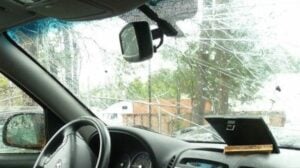A MIAFTR damage check ensures you’re getting a reliable, quality car. With just a few clicks, you can check to see if the vehicle has previously been written off and be sure that you won’t be dealing with any costly repairs down the road.
Did you know that users of Car Analytics get access to information on more than 450,000 accident-related write-offs and 150,000 insurance thefts?
Before being included in every Vehicle History Report, each incident is meticulously documented and identified using a combination of VRM and VIN (Vehicle Identification Number) identification.
When an insurer lists a loss on the MIAFTR (Motor Insurance Anti-Fraud and Theft Register) as a “Write-Off” or “Total loss,” you can find out what “Category” the loss was recorded under, as well as when it happened.
You can also get the details, like the official date, when it is added to the record in the database.
What does MIAFTR damage mean?
According to the code of practice for the disposal of motor vehicle salvage, the MIAFTR database records all written-off or stolen vehicles. MIAFTR exists to locate stolen cars, recover them, and spot fraud.
The latest freedom of information request claims that up to 80,000 vehicles not recorded should be reported as written off annually.
There are about 300 customers, and their access to MIAFTR is restricted. They consist of insurance firms, self-insured compensators (such as fleet businesses), police departments, and delegated authorities acting for current subscribers (e.g., an insurer).
Many instead rebuilt before being sold to dealers who, although they perform history checks with trusted sources, need to be made aware of the history of the damage to the car.
Critical databases to help fight insurance fraud
In the UK, many databases have been created to track people’s insurance histories to combat insurance fraud. These databases may contain your information, including the insurance you’ve purchased, your no-claims discount, and your claims history.
The Motor Insurers’ Bureau is in charge of managing a number of these databases (MIB). Its purpose is to compensate victims of hit-and-run drivers who were uninsured and unidentified, but it now handles much more.
MIB manages the databases of the Claims and Underwriting Exchange (CUE) and Motor Insurance Anti-Fraud Theft Register (MIAFTR). When battling insurance fraud, one needs to know about these crucial databases.
CUE is a central database of incidents involving automobiles, homes, industrial illnesses, and personal injuries reported to insurance companies and may or may not have resulted in a claim.
The Motor Insurance Database is known as MID. Its name implies that it is a list of all UK-registered insured vehicles, and like the CUE database, it is maintained by the MIB.
To enforce traffic laws, the Driver and Vehicle Licensing Agency (DVLA) and the police both rely on the MID. However, the police force is the most significant user, conducting more than two million inquiries monthly.
By identifying and removing uninsured vehicles off the road using the database, it seizes approximately 115,000 automobiles, vans, lorries, and motorcycles annually.
Avoiding scams when buying a used car
Buying a used car can be a cost-effective way to get a vehicle, but it can also come with its share of risks, especially regarding scams. In this guide, we’ll explore practical tips and strategies to help you avoid scams when purchasing a used car. Following these steps, you can make a wise and secure investment in your next vehicle.
Buy from Reputable Sources:
One of the most effective ways to avoid scams is to purchase your used car from reputable sources. Consider:
- Licensed Dealerships: Dealerships often have a reputation to uphold, making them a safer option.
- Certified Pre-Owned Programs: Look for manufacturer-backed certified pre-owned programs that offer warranties and inspections.
- Private Sellers with a Transparent History: If buying from a private seller, ask for maintenance records and check the vehicle’s history.
Challenges in MIAFTR check
All companies do not use MIAFTR.
Insurers must notify the Driver and Vehicle Licensing Agency (DVLA) when a car is written off. However, MIAFTR is an electronic funnel that automatically notifies the DVLA of write-offs, given that the write-offs are uploaded to MIAFTR.
There are nearly 203 motor insurance companies in the UK, among which 6 of them don’t use MIAFTR. It will be problematic when vehicle history checks fail to reveal any vehicles written off by these six insurers.
Insurance solely for third parties
The MIB stated that “if the vehicle is not fully insured,” a car may not be identified as a write-off. Such cars will not have been deemed a “total loss” by the insurer and may not be on MIAFTR because third-party insurance does not pay out for damage to the insured vehicle.
Delay in updating MIAFTR
According to the Motor Insurers’ Bureau, certain insurance companies “load manually or in batches” when adding vehicles to the MIAFTR, potentially causing delays. However, our history checks did not reveal that some of the cars we examined were auctioned off as write-offs more than a year ago.






